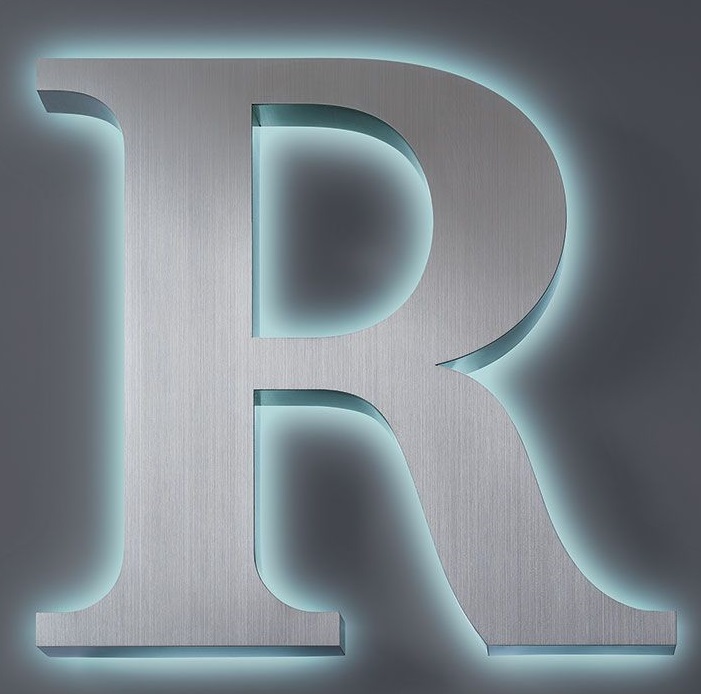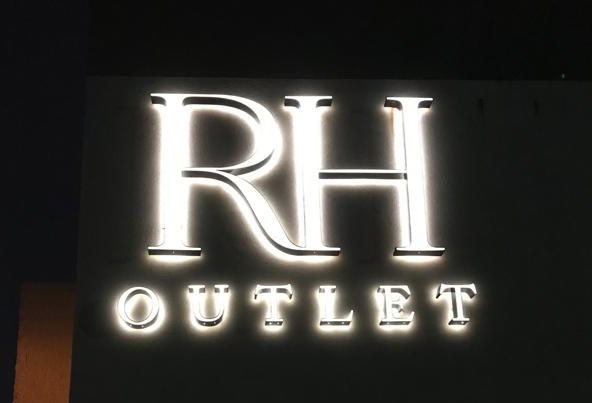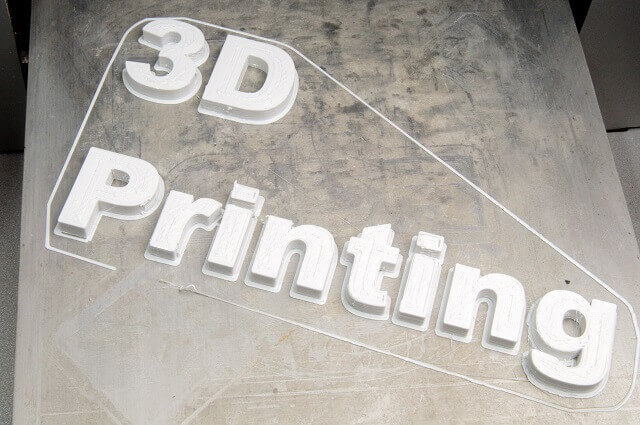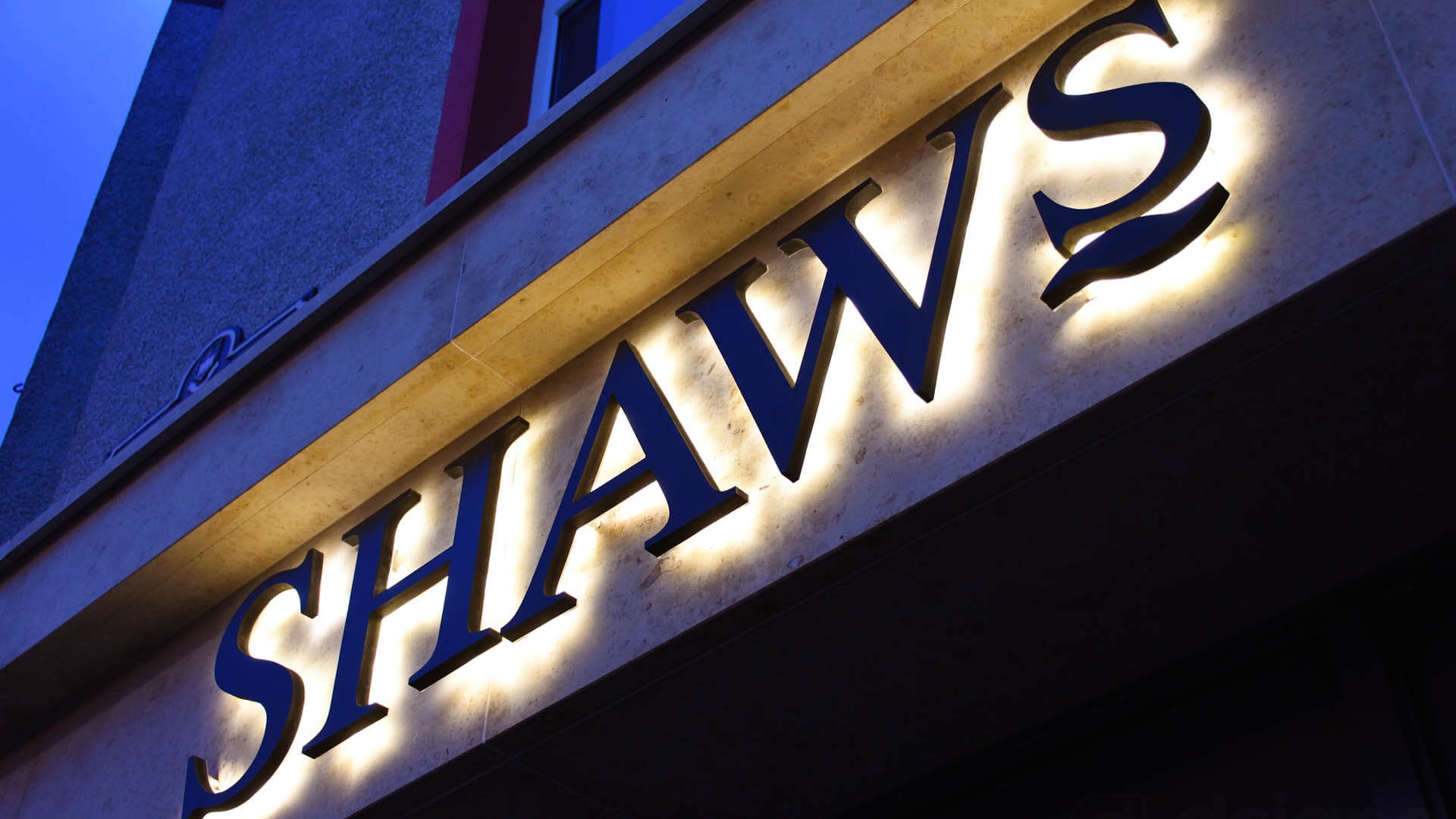The next generation of technology is transforming marketing and the way advertising & themed environments are created. With large-format 3D printers super-sized objects for retail, staging, display, events, and architectural design can be produced. Objects can be fabricated in any size and shape without the restrictions of traditional methods. Above all 3D printing in signage and retail provides the opportunity to create stunning eye-catchers.
Types of Channel Letter & Signage
There are four basic types of channel letters you need to know as a business owner or decision maker, and that the key differentiator among each one is in how it’s illuminated. Another important factor to be consider is landlord criteria and local zoning regulations pertaining to signs as per size, projection, and illumination. Let’s dissect the specifics.
1. Standard Front-Lit
The most common type of channel letter is the front-lit or standard channel letter. This letter is aluminum on the back and sides. The sides of a channel letter are also known as “returns.” The standard front-lit channel letter are illuminated internally with either LEDs or neon lights, lighting the “face” of each letter. The trim caps screwed to hold on the sign face, can be made out of plastic or aluminum, while the the sign face itself is constructed out of one of two types of plastic: polycarbonate or acrylic. Acrylic is shinier while polycarbonate is stronger. Usually, the color elements of the the logo are done with cut-out translucent vinyl or, if the color of the face is solid, the acrylic itself can be in its specific color, as long as the color matches the standard colors available. Because of the materials used, standard front-lit channel letters are highly customizable.
2. Halo-Lit
Halo-lit letters are also referred to as reverse channel-lit letters. They consist of aluminum faces and returns, which are lifted off the wall or raceway. This allows the neons or LED lights inside them to shine out the sides and cast a glow around each letter, and thus creating a halo effect. Standard channel letters, on the other hand, solely light the face of each letter. Halo-lit letters are often used for sign projects that require a unique, classy, or distinguished look or brand image.
Oh, and in case you were wondering what a raceway was, keep reading!
3. Front/Back-Lit
Want to get really fancy? Maybe you’re considering a sign with yellow illuminated faces and a blue halo effect? That’s where a front/back-lit channel letter shines. (Yes, pun intended.) This type of channel letter combines the standard front-lit letter with the halo-lit letter. The sides of the letter are aluminum, the faces are polycarbonate, and the back of the sign is open to reflect the LED or neon illumination off of the wall.
4. Open Face Lit
The back and sides of the open-lit channel letter are both aluminum, just like the standard front-lit channel letter; however, in this scenario, the sign is usually lit with neon lights rather than LEDs. The only other major deviation from the standard front-lit channel letter here is that the sign face is either clear or has no sign face at all so that the internal exposed neon can be viewed.
Requirements of 3D Printing in Channel Letter & Signage
Strength
With a single 3D printed object, greater strength can be accomplished. This is due to the perimeters encapsulating the entire object and passing loads throughout without disruptions in the path. The Infill that is inside also assists in taking the load and spreading it through the entire print and thus reducing stress concentrations. This enables prints to be exceptionally strong in compression, and to a lesser degree, tension. Depending on the infill rates used on a print, the forces necessary to cause damage might be well in excess of what an average adult could exert.
No Assembly Required
There are numerous instances where 3D printed objects are glued, melted, or mechanically held together to form bigger pieces. One of the qualities of being able to print in a seriously large format is that pre- and post-processes can be eliminated. When printing smaller pieces for an item that will be assembled, there may need to be design work to add pegs and keys to assist pieces in locking together. On the other hand, utilizing glues and other methods are time-consuming and not always simple. The ability to fabricate a big object in one go helps to simplify the manufacturing process and save time.
Lifesize
We’ve seen 3D printers make everything from toys to jewelry to food, but the signage and retail industry needs bigger. So big, in fact, that this industry demands 3D printers that can print entire pieces of furniture and sculptures. In addition channel letters, tables, lamps, action figures, and mannequins all fit into the idea of life-size 3D printing in signage and retail.
Practical Functionality
In addition to the life-size benefit of large-format 3D printing in signage and retail, practical functionality is also a key perspective. For instance, to scale models of hand-held gadgets, toys, newly designed point of purchase displays, and many more items are useful for sales and visualization purposes.
Expanded Creativity and Capability
Many more details can be expressed or replicated in a piece that is large. For instance, there have been several artists who have made pieces over 20 feet long by incorporating 3D printing into their skillset. Sculptures of dinosaurs with fantastic skin detail have been cast by a lost-wax process after using 3D printed pieces as the base of the work. Full-size busts of persons have been printed as well as spaceship simulators and functional robots. The possibilities for creating new items is endless!
Common Applications of 3D Printing in Channel Letter & Signage
Soft Signage – Frames
Soft signage, digital textile printing, is a fabric graphic inserted into a frame. Traditionally these frames are created out of aluminum, wood, acrylic, and steel. With today’s technologies, why not 3D printed? After 3D printing the frame you can finish it with lighting to make it stand out even more. When you have a large volume 3D printer that is able to create huge designs, this opens up a world of possibilities.
Branding with Channel Letters
Channel letters are the number one choice in exterior signage on public and commercial buildings. It can also be used to attract customers to an exhibition stand or decorate the interior of a store. These custom-made letters are made out of metal or plastic and often internally illuminated. 3D printing channel letters on-demand with a large format printer will save a lot of time and money compared to traditional methods.
Ornaments and Architecture
Through the introduction of large volume 3D printing, the architecture industry has changed. The ability to create large objects using 3D printing will simplify construction and renovation projects. They can take on a completely new identity thanks to the ability to 3D print large structures, for example, ornaments. Ornaments no longer have to be handcrafted, significantly reducing labor costs as well as material costs (since it is made of plastic).
Interior Decor
Large-format 3D printers enable people to 3D print lamps, tables, chairs, etc. Designers now have the ability to create interior decor on the spot. First, they will make a digital design of the decor and after that, they can make it a reality by 3D printing it.
Custom Sculptures of Mannequins for Retail
People are no problem with 3D printing. Celebrities, football players, catwalk models, you name it, can be printed. Large volume 3D printing allows for entirely customized campaigns. One of our clients is 3D printing entire fashion mannequins for their retail customers.
Light your world
You can print entire lamps in one piece with a large format 3D printer. Tractus3D printers in combination with the 3D printing software Simplify3D enable you to print a hollow object to fit the light bulb without any problems.
Point of Purchase Displays
3D printers are used in retail by manufacturing point-of-purchase stands like exhibition kiosks and displays. This is down to the flexibility of 3D printing and the wide range of colors of the printable materials (filaments).
Exhibition Designs
When organizing special events you can distinguish yourself with a large format 3D printer. They are ideal to produce parts of exhibition designs or props to impress visitors. For example create your own 3D printed guest in a life-size sculpture or action figure like Batman, to amaze everybody.









Leave A Comment